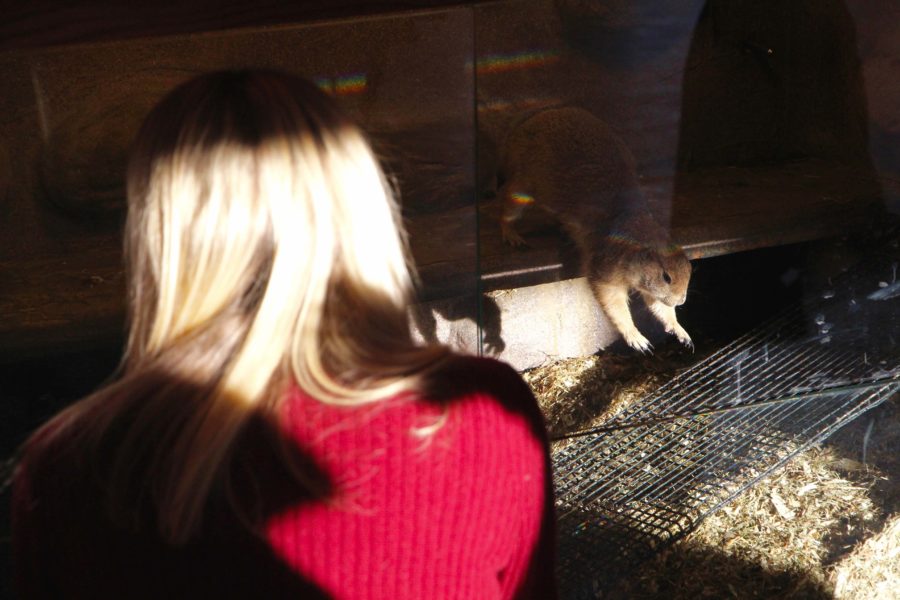Dyson Administrators Respond to Museum Criticisms; SGA Resolution in the Works
Pace’s Dyson School of Arts and Sciences administrators responded to many of the emphatic criticisms from the community regarding the museum conversion, while Student Government Association (SGA) met with students to get a unified student resolution put together.
Dyson Dean Nira Herrmann and Associate Dean Richard Schlesinger explained that all involved parties that needed to be notified were notified and the resulting firestorm over the announcement was a product of social media and a portion of the Pace community jumping to conclusions before it had the facts. They added that many of the rumors regarding the museum were inaccurate and that the petitions started as a result of those rumors were well-intended but ill-founded.
The initial plan, according to Herrmann and Schlesinger, was to inform donors first, Environmental Center Director Angelo Spillo and his staff next, the environmental program third, and the general student, faculty, and staff body last.
“Because the rollout plan got overtaken by the petition at change.org and activism, our plans to do an orderly rollout got completely taken over by events,” Herrmann said. “The one thing that troubles me is that people went to social media, but no one contacted me until late in the process.”
Multiple anonymous sources claimed that neither Spillo nor Jim Eyring, the assistant director, were consulted in the decision-making process. While neither would comment, Schlesinger denied that claim.
“We had a rollout plan, the donors were contacted even before Angelo was contacted,” Schlesinger said. “Angelo was informed and somehow after that, the process got subverted. So, anyone who says they weren’t consulted is wrong.”
A wealth of negativity, however, went towards Herrmann’s comment that prospective students complained to her that the enclosures were not “hospitable” and some of the animals were better off in other preserves.
“Even places like the San Francisco Zoo or the Bronx Zoo have moved to naturalistic habitats and they offer the animals both an environment that is more similar—can’t always be identical because they come from different climates and different vegetation that may not survive here—but they do try to give them a more naturalistic environment and they also give them, I think, somewhat more privacy,” Herrmann said. “The enclosures are better than many, but they’re not necessarily the best environments for these animals.”
The quality of the enclosures also relates to donor Lucy Walezky’s concerns, which Herrmann and Schlesinger disclosed, were for the animals’ welfare and that the enclosures are to be donated with the animals in order to “guarantee” they’re not getting an environment worse than those.
Schlesinger also explained that no one can determine whether the enclosures will be the best place for the animals because it isn’t known where they’re going yet.
Spillo has begun contacting places who may want to take the animals; however, nothing’s official.
Space will be made in the Dyson College Environmental House for animals that cannot be relocated, according to Herrmann; however, they’d prefer to find a home comparable to now.
The Environmental Science Lab in Dyson Hall’s basement, which is used regularly, was considered, according to Herrmann. Herrmann knows of no other spaces on campus that would be suitable for a lab.
“If someone knows of a space that is suitable, I would look at it,” Herrmann said. “It’s not for lack of initiative on our part trying to find space or not wanting to accept suggestions from others, it has to be appropriate space and Dyson Hall is pretty much reaching its capacity.”
It is also unknown at this time what specifically the lab will pertain to in environmental studies and the three new hires will determine the needs of the lab, according to Schlesinger.
SGA Vice President Karen Reitan hosted two meetings on Wed., Feb. 22 and Mon., Feb. 27 between students and herself, which were meant to provide guidance on how students can proceed, facilitate discussion, and formulate resolutions.
There are multiple petitions going around campus, but freshman Samantha Mayrose’s online petition has garnered 686 supporters, as of Wed., Mar. 8. The only issue is that it includes non-Pace students, according to freshman Noah Brennan, who’s working closely with Reitan.
The timetable on the resolution is unknown at this time.
Your donation supports independent, student-run journalism at Pace University. Support the Pace Chronicle to help cover publishing costs.

